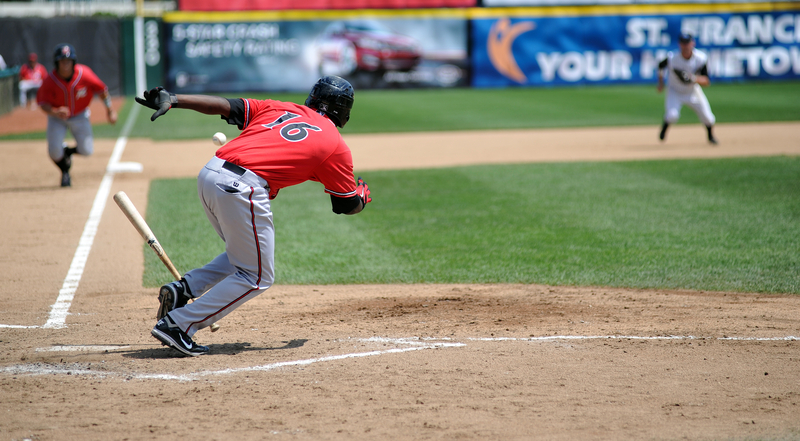Last updated on November 3rd, 2023 at 08:30 am
A squeeze play occurs when the hitter lays down a bunt to get the third base’s runner to score at home plate. Manager’s call this play when there are less than two outs in the inning, usually. The runner at third base waits to run while the batter attempts to lay down a bunt to run home.
A Video That Explains this Sequence
What is a Suicide Squeeze Play in Baseball?
The suicide squeeze play is similar to the squeeze play (squeeze bunt), but the difference is that the runner on third base takes off to home on the pitch no matter what. The suicide squeeze forces the batter to contact the ball via a bunt to allow the runner to score. As long as the hitter can lay down a bunt on the ground somewhere, the runner will likely score.
Which Baseball Play is Better to Run and Why?
The squeeze play vs. the suicide squeeze is good plays to run for different reasons. For example, you might have a fast runner on third base who does not need to take off immediately on a pitch, so you can run the squeeze play to try and score at home. However, you might have a slow runner at third and a great contact specialist at home plate, so you risk a suicide squeeze play.
The suicide squeeze is the riskier of the two approaches because a hitter can miss the ball or pop the ball up and create a double play.
How are these Plays Different from a Sacrifice Bunt?
A traditional bunt differs from a squeeze and a suicide squeeze in two ways. First, a conventional bunt attempt aims to move a runner to a different base. Second, a traditional bunt can be a way to get on base for a hitter by catching the defense by surprise. Bunting for a hit is known as a drag bunt, which means you square up to bunt at the last second to catch the defense off guard.
A squeeze/safety squeeze play’s goal is different from a traditional bunt. First, a squeeze play’s objective is to square up early to make contact with the ball via bunting. Your goal as the hitter is to get the ball on the ground so the runner can score at home. If you can safely achieve the run and get to first base, that’s a bonus, but not the goal.
Does Bunting Go Against Your Batting Average?
As the hitter bunts, brings home the run, and gets to first base safely, they receive a hit credit to your batting average. However, if you lay down the sacrifice and score the runner while getting thrown out at first, you are giving RBI credit and not impact your batting average. If you get on first base via an error and the runner scores, you receive recognition with a sacrifice hit.
How Should Teams Defend against These Bunts?
Generally speaking, MLB teams try and defend the safety squeeze play by preparing for the situation ahead of time. If a batter is up at the plate who can bunt, MLB teams might move the infield defense on the lip of the grass in preparation. Once the batter makes contact with the ball, the third base and first base players crash to home plate to get the ball and tag the runner out trying to score. Depending on how quick the defense can get to the ball can determine if they can make an out at home.
Conclusion on Squeeze Plays in Baseball
Sabermetrics runs organizations with their decision-making via probability scenarios. Since the data concludes that bunting is risky and can limit expected runs in baseball, teams generally opt to swing away to drive a runner home. While teams will squeeze bunt to get the winning or tying run home, most swing away. However, one can argue that bunting can catch a defense napping since they don’t expect a bunt. If you are able to catch the defense napping, you can get on base via a drag bunt.
Similar Posts
What Does QAB Mean in Baseball?
What is a Quality Start in Baseball?
What is the Eephus Pitch in Baseball?
What Does a Bench Coach in Baseball Do?
What Does Bush League Mean in Baseball?
Greg Kristan, owner of The Stadium Reviews, LLC and TM Blast, LLC, brings his extensive experience visiting over half of the MLB ballparks, along with numerous MLS, NHL, NBA, and NFL venues, to provide in-depth coverage on the bag policy, food options, and parking. He has also been interviewed about his experiences on several sports podcasts.


